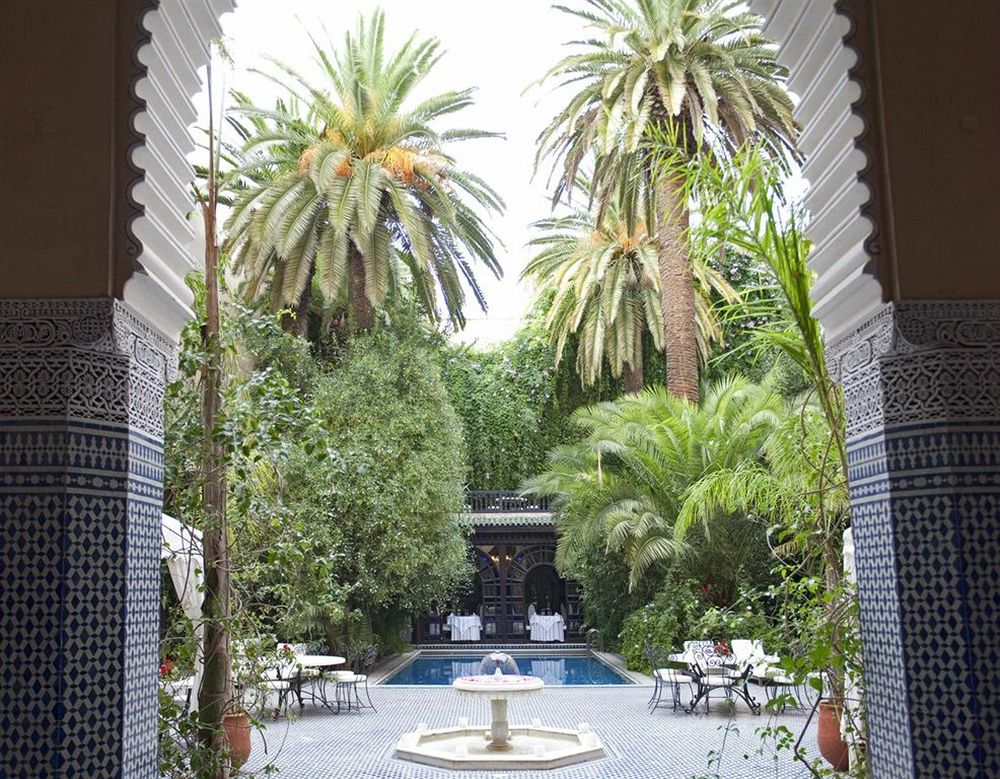
フェズホテル検索結果
AIが見つけた軒のホテルの最安値をご覧ください。
ベストホテル
最安値のホテル
ホテル等級
AIおすすめ
フェズベストホテル
フェズ 最低価格のホテル
最高評価のホテル
フェズにある5つ星ホテル
フェズにある4つ星ホテル
フェズにある3つ星ホテル
AIがおすすめする世界の旅行先
フェズ近くのホテル情報
フェズ 旅行に欠かせない情報
Fez (Arabic: فاس, Berber: Fas, ⴼⴰⵙ, French: Fès) is a city in northern inland Morocco and the capital of the Fas-Meknas administrative region. It is the second largest city in Morocco after Casablanca, with a population of 1.1 million (2014). Located to the northeast of Atlas Mountains, Fez is situated at the crossroad of the important cities of all regions; 206 km (128 mi) from Tangier to the northwest,
246 km (153 mi) from Casablanca, 169 km (105 mi) from Rabat to the west, and 387 km (240 mi) from Marrakesh to the southwest which leads to the Trans-Saharan trade route. It is surrounded by the high grounds, and the old city is penetrated by the River of Fez flowing from the west to east.
Fez was founded under the Idrisid rule during the 8th-9th century. It consisted of two autonomous and competing settlements. The migration of 2000 Arab families in the early 9th century gave the nascent city its Arabic character. After the downfall of the Idrisid dynasty, several empires came and went until the 11th century when the Almoravid Sultan Yusuf ibn Tashfin united the two settlements and rebuilt the city, which became today's Fes el Bali quarter. Under the Almoravid rule, the city gained the reputation for the religious scholarship and the mercantile activity. Fez was expanded during the Almohad rule and became the largest city in the world during 1170-1180 with the estimated population of 200,000.
Fez reached its zenith in the Marinid-era, regaining the status as the capital. Numerous madrasas, mosques, zawiyas and city gates were constructed which survived up until today. These buildings are considered the hallmarks of Moorish and Moroccan architectural styles. Marinid sultans also founded Fes Jdid quarter, where newer palaces and gardens were established. During this time, the Jewish population of the city grew as well, with the Mellah (Jewish quarter) attracting the Jewish migrants from other North African regions. After the overthrow of the Marinid dynasty, the ci
 時間 UTC+01
時間 UTC+01 通貨 MAD
通貨 MAD 言語 Arabic, Berber , French
言語 Arabic, Berber , FrenchStaypiaだけの特別な特典
リアルタイムホテル最安値比較
AIが見つけたin フェズの軒のホテルのリアルタイム最安値を簡単に比較検索できます。
316万軒のホテルを最安値で予約
最低価格に最大31%追加メンバーシップ割引でさらにお得にご予約いただけます。
自分だけの
AIがリアルタイムで更新するフェズ旅行情報で便利に旅行を準備しましょう。
よくある質問
フェズで最も人気のある5つ星ホテルはPalais Medina & Spa, Palais Faraj Suites & Spa, Palais Sheherazade & Spaです。 フェズ 評価順にホテルを見る
一般的なホテルの場合、客室予約はキャンセル締切日前まで無料返金が可能です。キャンセル締切日以降は手数料が発生する場合がありますので、ホテルバウチャーまたはメニュー>マイ予約でキャンセル締切日をご確認ください。
ステピアでは、AIが収集した316万件のホテルの最安値はもちろん、会員限定の追加割引価格で人気ホテルを予約することができます。



























